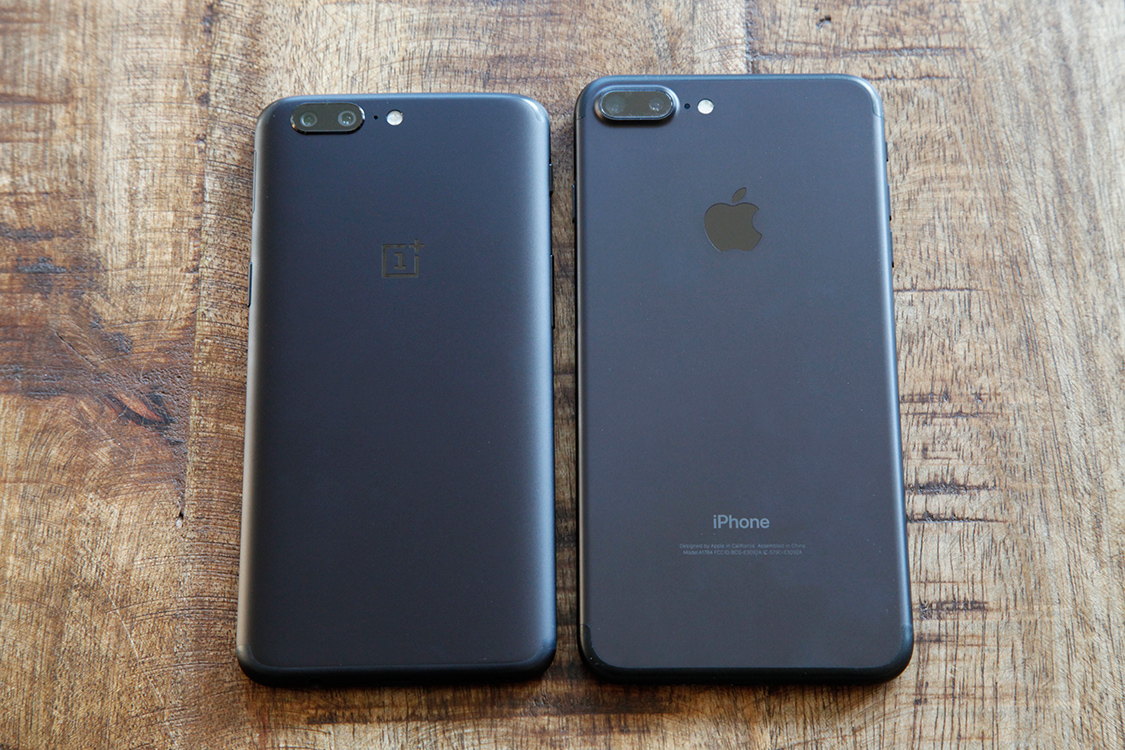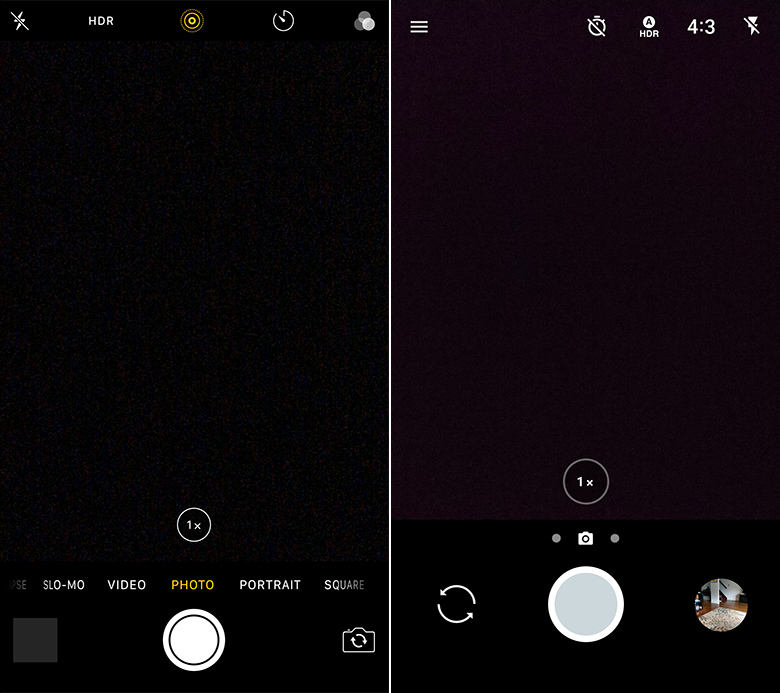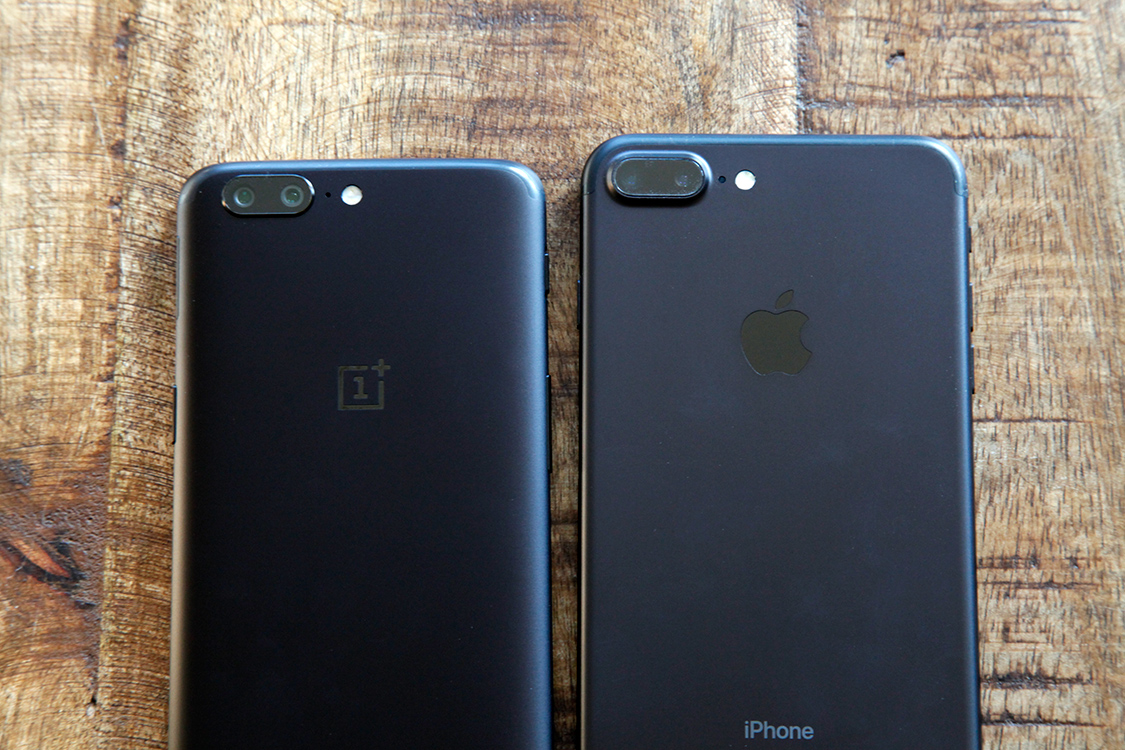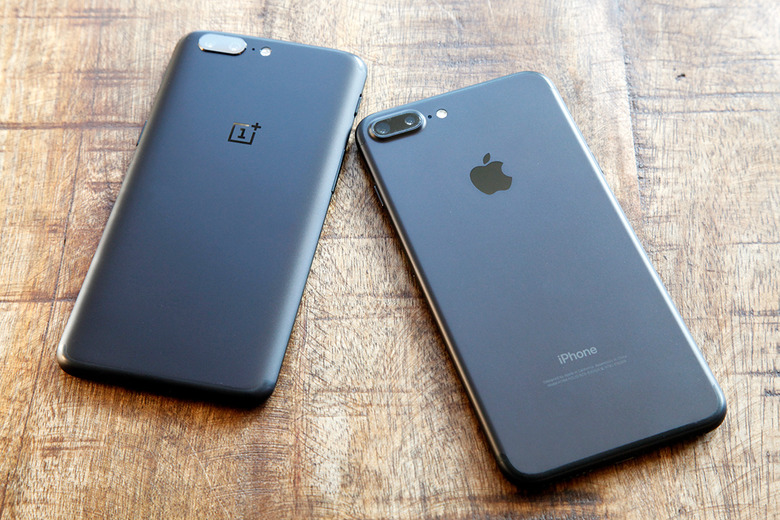OnePlus Tried To Stop Itself From Copying The iPhone 7 Plus, But It Couldn't
OnePlus on Tuesday afternoon finally took the wraps off its hotly anticipated new flagship phone, the OnePlus 5. If you haven't already seen it, be sure to read our full OnePlus 5 review. There is absolutely no question that the OnePlus 5 features specs and performance that make it one of the most powerful smartphones that has ever existed. There is also absolutely no question that the OnePlus 5's design is as close as we've seen to a carbon copy of the iPhone 7 Plus.
The OnePlus 5's design was a major focus in the weeks ahead of the phone's unveiling on Tuesday, mainly because the renders make it look so much like Apple's iPhone 7 Plus. In person, it's not quite the spitting image that it is in images, but the similarities are still borderline parody. I asked OnePlus about its new flagship phone design last week ahead of the device's announcement, and the response I got was interesting.
Unveiled on Tuesday, the OnePlus 5 has specs that outshine every other Android flagship phone out there. Even more impressively, it's priced lower than comparable handsets. Highlights include a Snapdragon 835 chipset, up to 128GB of storage, and up to 8GB of RAM. Seriously, 8GB! I've been using a OnePlus 5 review unit for more than a week now, and I am thoroughly impressed.
That said, it's almost impossible to look at the OnePlus 5 and not wonder how OnePlus could be so brazen as to copy the iPhone 7 Plus so thoroughly.

The OnePlus 5 is an iPhone 7 Plus copy. Period. There's no way to deny it, and trying to dance around it makes you seem foolish. Here's an excerpt from my review:
The color and finish of the OnePlus 5 are identical to the aluminum on the black iPhone 7 Plus. The mirror finish of the OnePlus logo on the back of the phone is identical to the mirror finish of the Apple logo on the back of the iPhone. The pattern of the antenna bands is almost the same, the placement of the dual-lens rear camera is almost the same, and the positioning of the rear-facing mic and the LED flash assembly are the same.
Honestly, this is all a bit embarrassing for OnePlus. The OnePlus 5 certainly does have some of the design elements that were found on earlier OnePlus phones, just as the HTC One A9 had design elements from other HTC One series phones. But iPhones are the most popular smartphones on the planet. If a company takes bits of pieces of its earlier designs and morphs them into an iPhone clone, people are going to notice. It looks like an iPhone.
I then went on to explain that the inspiration OnePlus took from Apple's iPhone 7 Plus doesn't end at the phone's design. The OnePlus 5 has a dual-lens rear camera like the iPhone 7 Plus and other smartphones. But while different phones utilize the second rear sensor in different ways, the OnePlus 5 copies the iPhone 7 Plus exactly.
Just like the iPhone 7 Plus, the OnePlus 5 has a "portrait mode" feature that creates a bokeh effect in the background of photos. And just like the iPhone 7 Plus, a single tap on a button in the OnePlus 5's camera app switches from the wide-angle lens to the telephoto lens, thus enabling 2x optical zoom.
Seriously, look at this:

Left: iPhone UI / Right: OnePlus 5 UI
Needless to say, one of the first questions I asked when I met with OnePlus ahead of the new flagship phone's unveiling was about all these similarities. I briefly discussed the company's response in my OnePlus 5 review, but one of the people I met added a few more tidbits.
The OnePlus spokesperson I met with made it clear that the company tried to avoid making a smartphone that resembled the iPhone 7 Plus so closely. For example, the company's designers first tried to place the dual-camera assembly near the center of the back of the handset, in order to avoid making the phone look so much like Apple's iPhone. This would have resulted in a design that more closely resembled earlier OnePlus phones like the OnePlus 3.
According to OnePlus, a centrally located rear camera would have made the phone thicker than they wanted, so they ended up having no choice but to move it to the corner. That's fine, but it obviously doesn't address other similarities between the OnePlus 5 and the iPhone 7 Plus. As noted above the aluminum finish, the mirror finish of the logo, the optical zoom UI, and the antenna lines are all aped from Apple.

When those points were raised, the best OnePlus could offer was that the company never wants to be different for the sake of being different. Instead, it tries to make design choices that are familiar to users. That's not a bad strategy, of course, but there's obviously a difference between "familiar" and "blatant copy."
The OnePlus 5 goes on sale next Tuesday, June 27th, starting at $479. It's a fantastic phone and a fantastic value. It's also a bit bizarre though, and to be frank, a bit embarrassing. Hardware designers at consumer electronics companies work so hard to engineer these modern marvels, and designers I've spoken with over the years take tremendous pride in their accomplishments. I can't imagine being a designer at OnePlus and taking much pride in a design that copies another company's hard work so blatantly.
